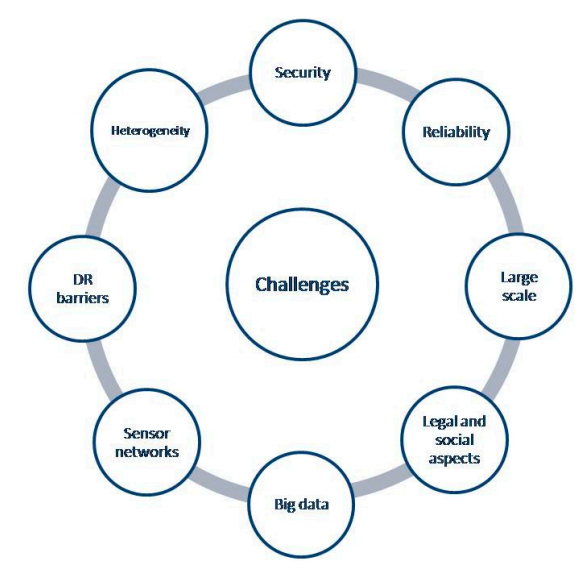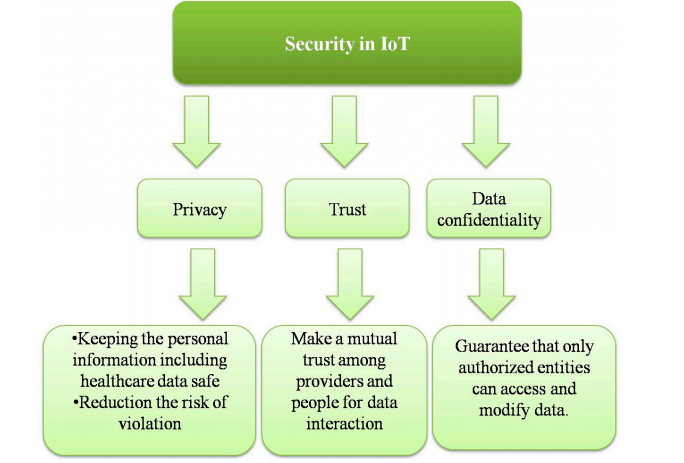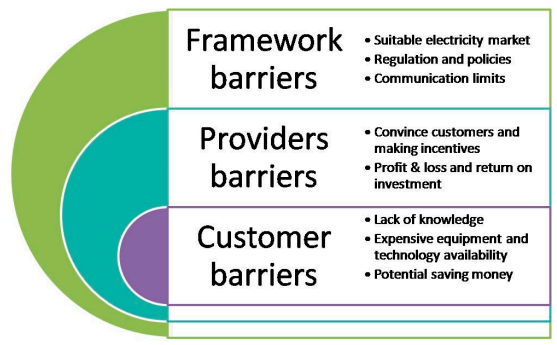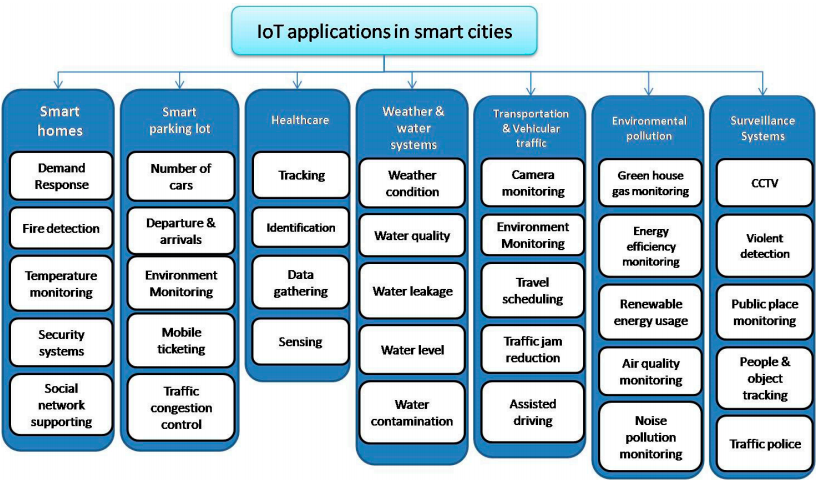ABSTRACT
With the expansion of smart meters, like the Advanced Metering Infrastructure (AMI), and the Internet of Things (IoT), each smart city is equipped with various kinds of electronic devices. Therefore, equipment and technologies enable us to be smarter and make various aspects of smart cities more accessible and applicable. The goal of the current paper is to provide an inclusive review on the concept of the smart city besides their different applications, benefits, and advantages.
In addition, most of the possible IoT technologies are introduced, and their capabilities to merge into and apply to the different parts of smart cities are discussed. The potential application of smart cities with respect to technology development in the future provides another valuable discussion in this paper. Meanwhile, some practical experiences all across the world and the key barriers to its implementation are thoroughly expressed.
IOT TECHNOLOGIES FOR SMART CITIES

Figure 4. The architecture of a wireless sensor node
WSNs make diverse proper data available and might be applied in lots of uses like healthcare, as well as government and environmental services. Moreover, WSNs can be aggregated with RFIDs to obtain several targets such as gaining data related to the position of people and objects, movement, temperatures, etc. A WSN consists of wireless sensor nodes which include a radio interface, an analog-to-digital converter (ADC), multiple sensors, memory and a power supply.
The different parts of a wireless sensor node are illustrated in Figure 4. According to the wireless sensor node framework, it includes various kinds of sensors which measure data in analog format which are converted to digital data through an ADC. Some procedures are processed on the data through a memory and microcontroller according to data requirements. Finally, data are transmitted by a radio interface. All of this equipment needs to be equipped with a power supply.
ACTUAL IOT APPLICATIONS FOR SMART CITIES
The IoT uses the Internet to merge various heterogeneous things. Accordingly and for providing the ease of access, all existing things have to be linked to the Internet. The reason behind this is that smart cities include sensor networks and connection of intelligent appliances to the internet is essential to remotely monitor their treatment such as power usage monitoring to improve the electricity usage, light management, air conditioner management. To get this aim, sensors are able to be extended at various locations to gather and analyze data for utilization improvement. Figure 5 illustrates the major utilizations of the IoT for a smart city. The key aims in this field of knowledge are expressed in the following subsections.
Figure 6 demonstrates the location of sensors in different parts of water distribution systems. Accordingly, within a storage tank, the level of water is measured by placing an ultrasonic sensor on the top of the tank, and two pressure transducers at the bottom. The quality of water can be measured both after and before the storage tank at strategic locations by a glass electrode for measuring water pH. The leakage can be detected in pipelines through three different sensors including vibration (using dual-axis accelerometers), pressure (piezo-resistive sensor) and sound (ultrasonic sensor) monitoring which can be seen in the left part of Figure 6.
IOT POTENTIAL APPLICATIONS FOR SMART CITIES

Figure 7. IoT potential for the smart cities
Figure 7 demonstrates several possible applications of the IoT for the smart city which are explained in this section.
PRACTICAL EXPERIENCE AROUND THE WORLD
According to the US National Intelligence Council present, the IoT is one of the most efficient sources of US economic profits on the way to 2025. As declared earlier, the interlinked objects were more than the people in 2011. This tendency has been increasing remarkably as the number of interlinked objects was around nine billion in 2012, whereas it is expected to be 24 billion till 2020. Accordingly, the IoT is going to be a significant resource for big data in the future.
The major strategies, rules, and results of a smart city have been reported by the Intelligent Community Forum awards from 1999 to 2010, for the following cities. Suwon and Seoul (South Korea), Taipei (Taiwan), Mitaka (Japan), Singapore, Waterloo and Calgary (Canada), Glasgow (Scotland), New York City and Georgia (USA), and Tehran (Iran) which have been appreciated for their efforts, and attainment in organizing broadband networks and e-services to support progressive eco-systems.
- Amsterdam, The Netherlands
- Chicago and New York, USA
- Busan, South Korea
- Nice, France
- Padova, Italy
- Business Models and Scaling-Up Practical Smart Grids
CHALLENGES

Figure 8. IoT challenges for smart cities
This section presents the current challenges for the implementation of IoT-based smart cities. Different IoT challenges for smart grids are demonstrated in Figure 8 and the expression of each one is as follows:

Figure 9. Security aspects in IoT
All systems should be resistant against cyber-attacks, particularly the critical infrastructure like smart meters. As a result, for successful implementation of IoT, cities should place privacy and security as a top priority. In Figure 9, some aspects of security in IoT including privacy, trust and data confidentiality as well as their solutions are presented.

Figure 10. DR barriers
The IoT is able to assist the contribution of the responsive demand in the system. There are still different barriers which can restrict participation in DR programs. As illustrated in Figure 10, these barriers can be categorized into three key sets, namely customer barriers, providers’ barriers, and framework barriers which are comprehensively studied in.
CONCLUSIONS
The importance of considering how new concepts and technologies (especially the IoT) benefit smart cities is undeniable. The aim of this review article was to explore variant specifications and features of IoT systems, along with the efficient incentives for utilizing them. Because the accomplishment of the IoT substructures can enable a volume of opportunities for smart cities, first, the most important research motivations were expressed and afterward, several main and helpful applications explained.
It was illustrated how daily activities could be extended and improved through employing them. Likewise, the challenges arising from implementing the IoT system were accordingly outlined. On this subject, the incorporation of the IoT platform into other independent and smart systems to provide an intelligent and widespread utilization is one of the most interesting future tendencies.
Moreover, providing a methodology to cope with some important challenges, such as the privacy rights of the users/residents, is still an area of research interest. Some of the developments in the actual implementation of smart cities across the world were presented, which can be considered as samples or pilot projects for future comprehensive smart cities. The IoT through its functionality and specifications should indeed employ smart systems and sensors to ensure residents’ rights.
Source: University of Beira Interior
Authors: Saber Talari | Miadreza Shafie-khah | Pierluigi Siano | Vincenzo Loia | Aurelio Tommasetti | João P.S.Catalão
>> Latest RFID Based IoT Projects for Engineering Students
>> Latest 50+ IoT based Security Projects for Engineering Students
>> IoT based Big Data and Cloud Computing Projects for B.E/B.Tech Students
>> 200+ IoT Led Projects for Engineering Students
>> IoT Environmental Monitoring System for Smart Cities Projects for Final Year Students

